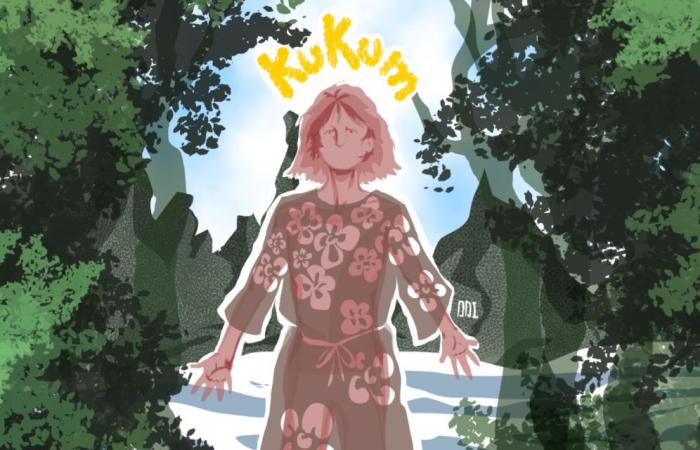The theatrical adaptation of Lawthe acclaimed novel by Michel Jean, makes a remarkable entrance onto the stage of the Théâtre du Nouveau Monde (TNM), driven by the audacious vision of Émilie Monnet. Anchored in Innu culture, the piece is intended to be a vibrant tribute to the memory and resilience of a people. If the intention is noble and the execution visually striking, the show sometimes struggles to keep the promise of its ambition, with a narration that falters and a rhythm that is sometimes confusing.
A sonic and visual tribute
As soon as the curtain rises, the Innu universe unfolds brilliantly thanks to the immersive scenography of Simon Guilbault. Directed by Émilie Monnet, she is surrounded by a team where indigenous voices shine not only on stage, but also behind the scenes. The costumes rich in symbolism designed by Kim Picard, and the archive projections mixed with the visual art of Caroline Monnet immerse the viewer in the Innu world, magnifying the landscapes and traditions evoked by the text. The songs and dialogues in Innu-aimun, a first on the TNM stage, resonate as a powerful act of cultural reappropriation. However, these moments of grace are sometimes interrupted by technical flaws – faulty microphones, poorly synchronized subtitles – which disrupt the fluidity of the experience.
A shattered narrative
The story opens with the meeting between Almanda and Thomas Siméon, an Innu hunter who becomes her husband. This seemingly classic starting point suggests a plot centered on the evolution of their relationship. However, the piece takes a more fragmented direction, where Almanda’s memories are intertwined with ancestral stories, weaving a framework that is more poetic than narrative. Far from a linear progression, the story evolves to the rhythm of the seasons and legends, reflecting a conception of time specific to Innu culture, where collective memory and oral stories prevail over a conventional dramatic structure.
Poetry as a breath of identity
The poetry of Joséphine Bacon, omnipresent in this adaptation, transcends the stage. By collaborating with Laure Morali, Bacon breathes lyrical force into the text, giving the innu-aimun a gravity and beauty rarely heard on a Quebec stage. In doing so, language becomes a tool of resistance and reaffirmation of Innu identity, a gesture that challenges cultural hegemony and claims the legitimacy of this culture on the national scene.
It is in this relationship, carried by a palpable chemistry, that the concept of “home” comes to life: a space of belonging, not of ownership.
The territory like at home
At the heart of the piece, a fundamental opposition emerges between the Innu vision of the territory – a shared and respected space – and that imposed by colonialism, reducing the land to an object of possession and exploitation. With delicacy, the piece illustrates the nomadic life of the Innu, an intangible “home” shaped by a harmonious relationship with nature and a living language, in brutal contrast with the violence of sedentarization.
The love story between Almanda and Thomas Siméon – aptly interpreted by Étienne Thibeault and Léane Labrèche-Dor – serves as an anchor point to explore these themes. If Labrèche-Dor delivers a sincere performance, she sometimes struggles to transcend the constraints of the text to extract a more visceral dramatic intensity. Their union, although tinged with idealism, embodies a symbolic alliance between two worlds while questioning what it really means to inhabit a territory. It is in this relationship, carried by a palpable chemistry, that the concept of “home” comes to life: a space of belonging, not of ownership.
With Lawthe Théâtre du Nouveau Monde marks an important milestone for Quebec theater, an ode to memory, language and love, a powerful reminder that the colonial past continues to permeate our present. An invitation to reimagine our own relationship with the territory, and to recognize the wisdom of indigenous voices who, today more than ever, illuminate our collective future.






